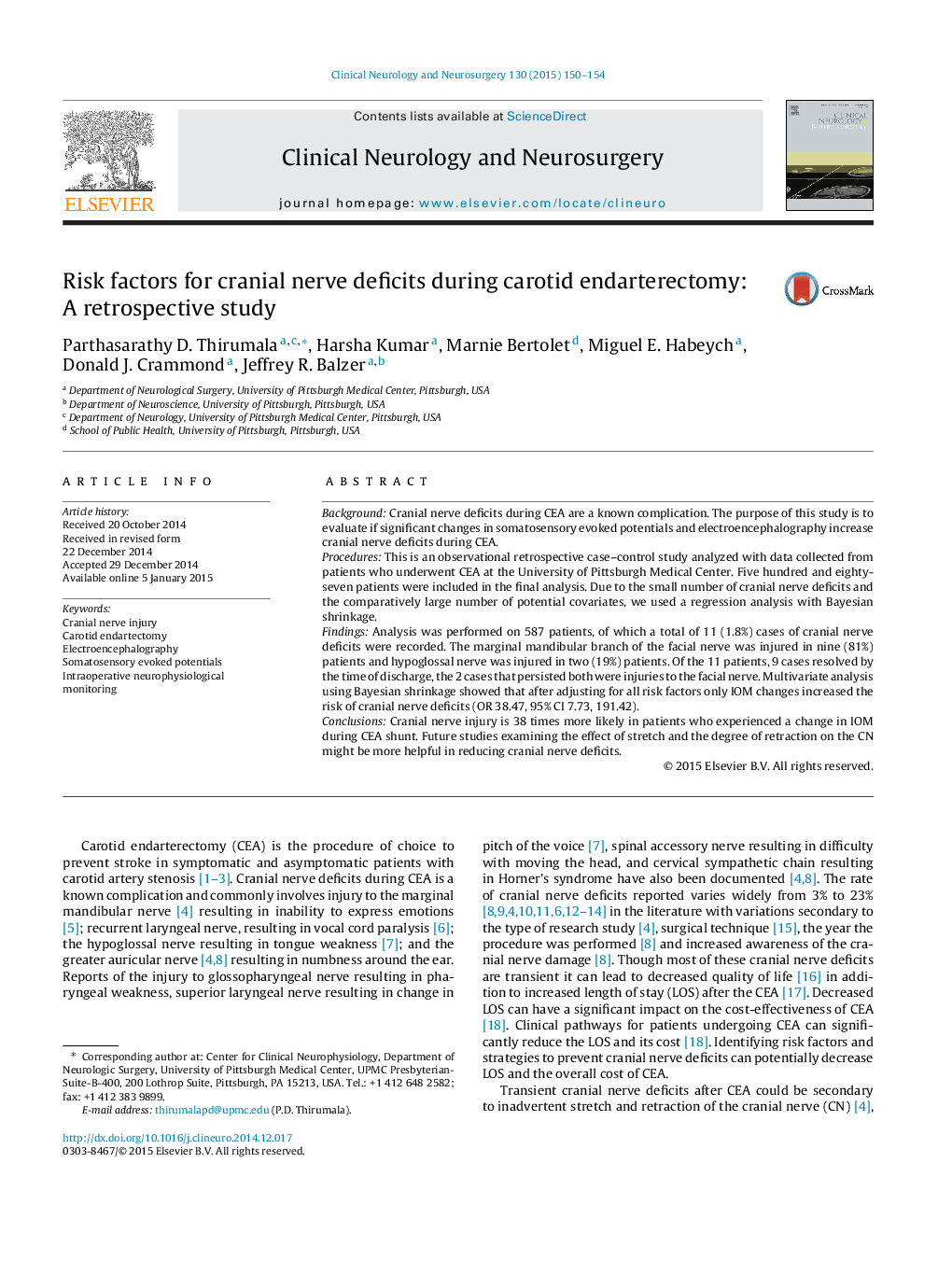| Article ID | Journal | Published Year | Pages | File Type |
|---|---|---|---|---|
| 6006457 | Clinical Neurology and Neurosurgery | 2015 | 5 Pages |
â¢Cranial nerve injury is 38 times more likely in patients who experienced a change in IOM.â¢Neurotonic discharges can indicate impending nerve injury.â¢Studies need to examine the effect of stretch and the degree of retraction on the CN.
BackgroundCranial nerve deficits during CEA are a known complication. The purpose of this study is to evaluate if significant changes in somatosensory evoked potentials and electroencephalography increase cranial nerve deficits during CEA.ProceduresThis is an observational retrospective case-control study analyzed with data collected from patients who underwent CEA at the University of Pittsburgh Medical Center. Five hundred and eighty-seven patients were included in the final analysis. Due to the small number of cranial nerve deficits and the comparatively large number of potential covariates, we used a regression analysis with Bayesian shrinkage.FindingsAnalysis was performed on 587 patients, of which a total of 11 (1.8%) cases of cranial nerve deficits were recorded. The marginal mandibular branch of the facial nerve was injured in nine (81%) patients and hypoglossal nerve was injured in two (19%) patients. Of the 11 patients, 9 cases resolved by the time of discharge, the 2 cases that persisted both were injuries to the facial nerve. Multivariate analysis using Bayesian shrinkage showed that after adjusting for all risk factors only IOM changes increased the risk of cranial nerve deficits (OR 38.47, 95% CI 7.73, 191.42).ConclusionsCranial nerve injury is 38 times more likely in patients who experienced a change in IOM during CEA shunt. Future studies examining the effect of stretch and the degree of retraction on the CN might be more helpful in reducing cranial nerve deficits.
